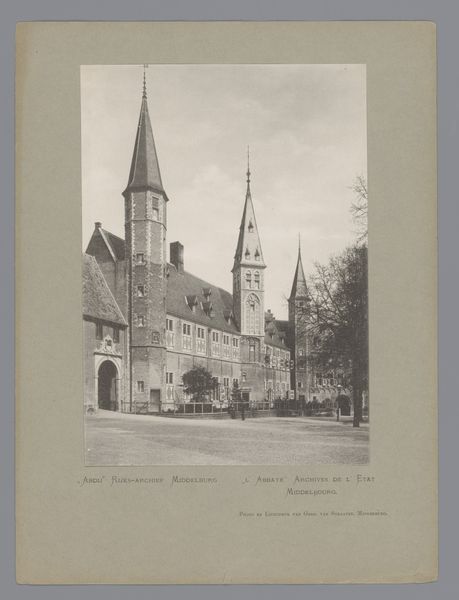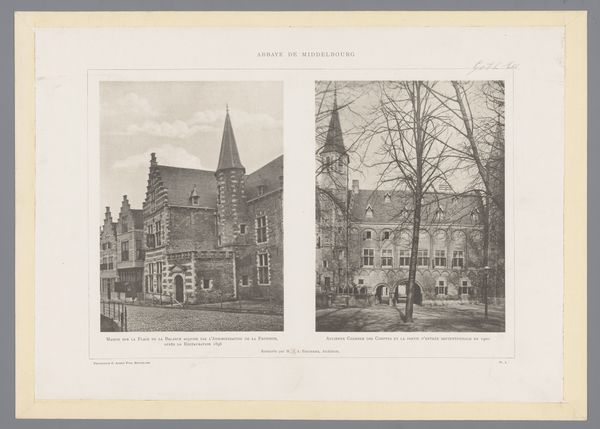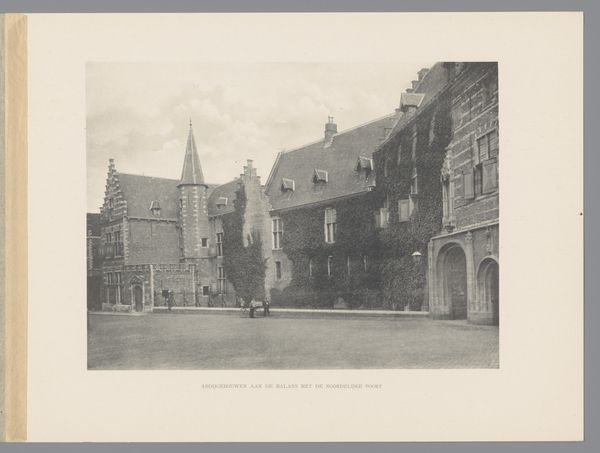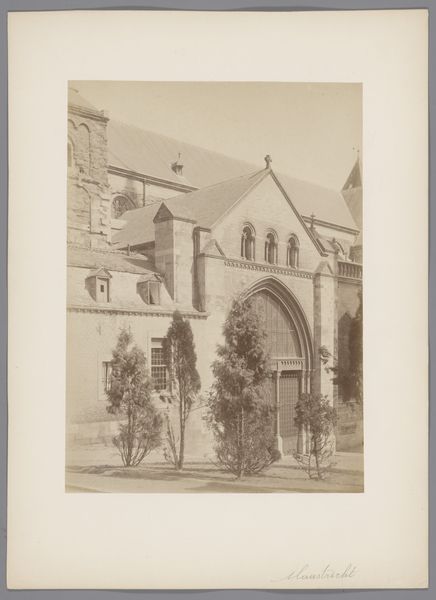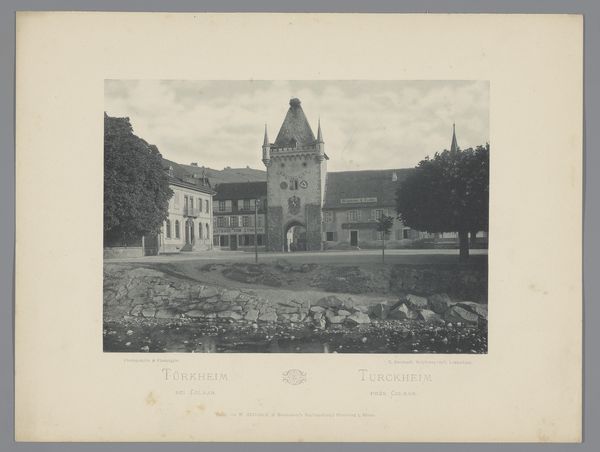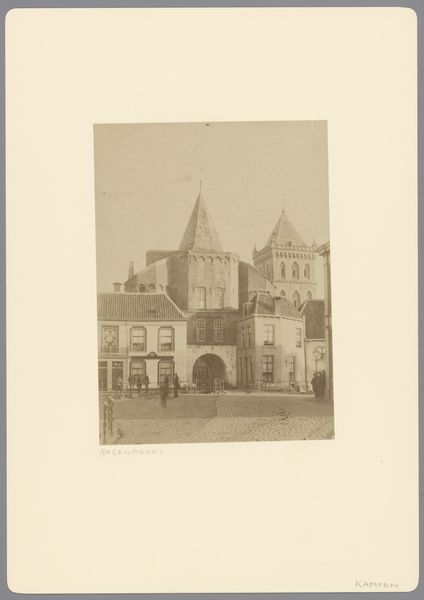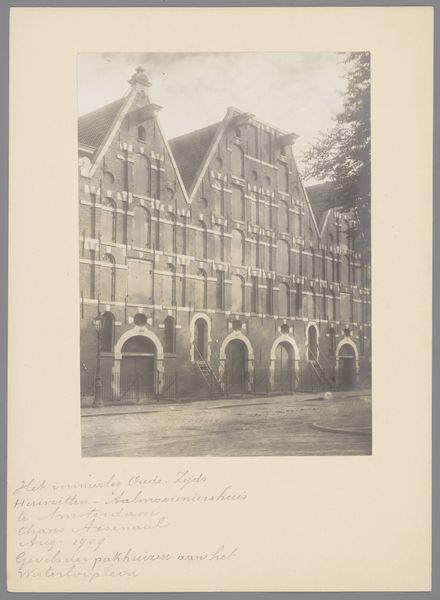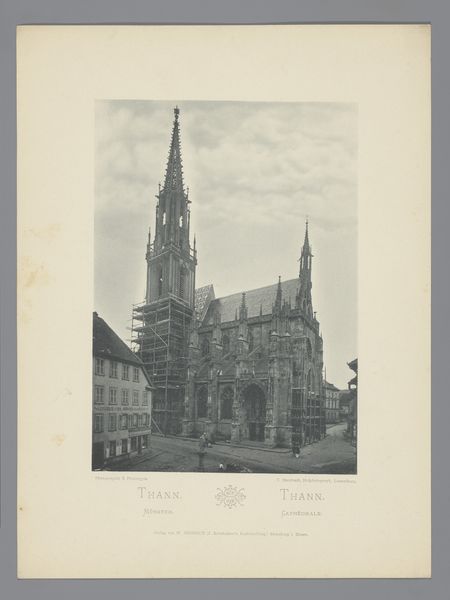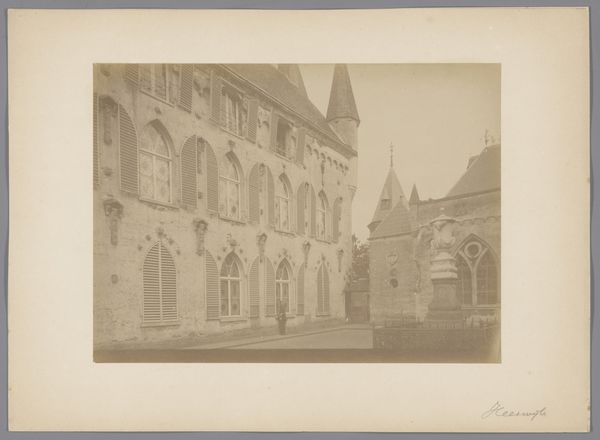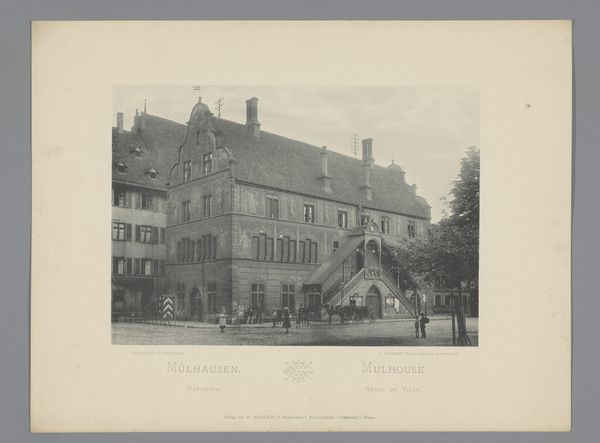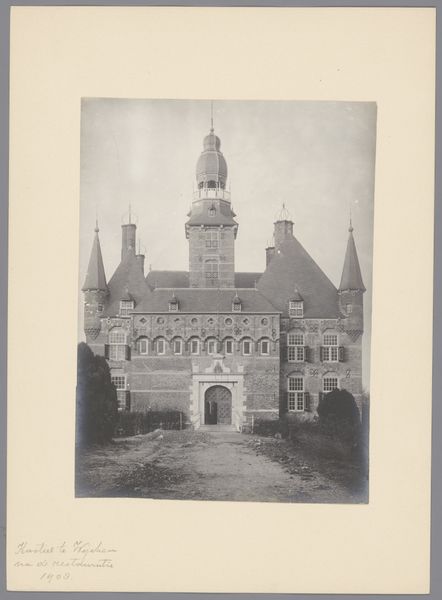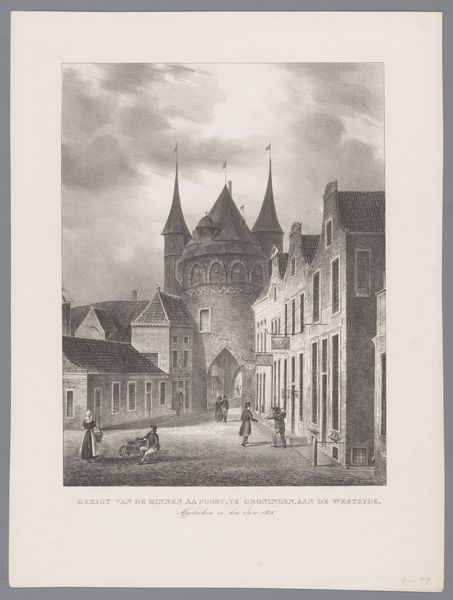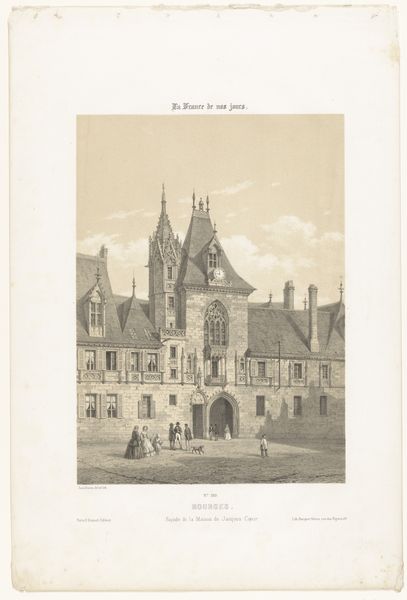
Gezicht op de archiefgebouwen aan het Abdijplein van de Abdij van Middelburg after 1906
0:00
0:00
print, photography, architecture
# print
#
photography
#
cityscape
#
architecture
Dimensions: height 449 mm, width 320 mm
Copyright: Rijks Museum: Open Domain
Curator: Let’s consider this photographic print, “Gezicht op de archiefgebouwen aan het Abdijplein van de Abdij van Middelburg,” placing us before the archive buildings at Middelburg Abbey, captured after 1906 by C. Aubry Fils. What strikes you immediately? Editor: Well, that's quite a mouthful of a title! Jokes aside, there's a palpable sense of… gloom. I’m getting historical vibes; all those soaring towers casting shadows. It looks serious. Does it feel serious to you? Curator: I see what you mean. I think the gravitas of the image connects directly with the Abbey’s historical role—its place as a site of religious and political authority through the centuries is written in its architectural language. The absence of bustling crowds, the lone figures... that silence feels heavy. Editor: Heavy indeed. I wonder about those lone figures you mentioned. Are they going about important business? Maybe the somber tones of the image make it hard to really imagine. It's all greys and browns; the antithesis of vibrancy. I can see where the abbey buildings stand. Why highlight them? Curator: Aubry, in a way, memorializes institutional memory through architecture. The archive building housed important records and deeds—legacies, even— of prominent families and local government. So this image functions, in part, as a statement about historical power structures and who gets to write that history. This relates to concepts of spatial justice and representation within archives. Editor: Ah, so we're really talking about power dynamics being built into the very stones here, in this image as well. Like the very buildings are trying to look imposing! The photographer obviously also found it of significance. This image really makes you think, huh? About legacy, who creates it, who's in charge... Curator: Precisely. Aubry Fils allows us a lens to dissect those narratives encoded in the stones—narratives often excluding or misrepresenting marginalized communities. It encourages a visual interrogation into whose stories are centered, and whose are silenced, within these historical and architectural behemoths. Editor: A silence that's deafening now that you point it out! Gosh, I was just struck by the light and dark when I began, but you really gave me so much to ponder about the social context and deeper layers woven in, don't you think? Thank you for your insight! Curator: You've shifted my perspective as well. Paying more attention to what my intuitive responses say has definitely improved how I analyse works, especially after considering how certain historical contexts influence our perspectives. It has really helped in my line of work. Thank you!
Comments
No comments
Be the first to comment and join the conversation on the ultimate creative platform.
